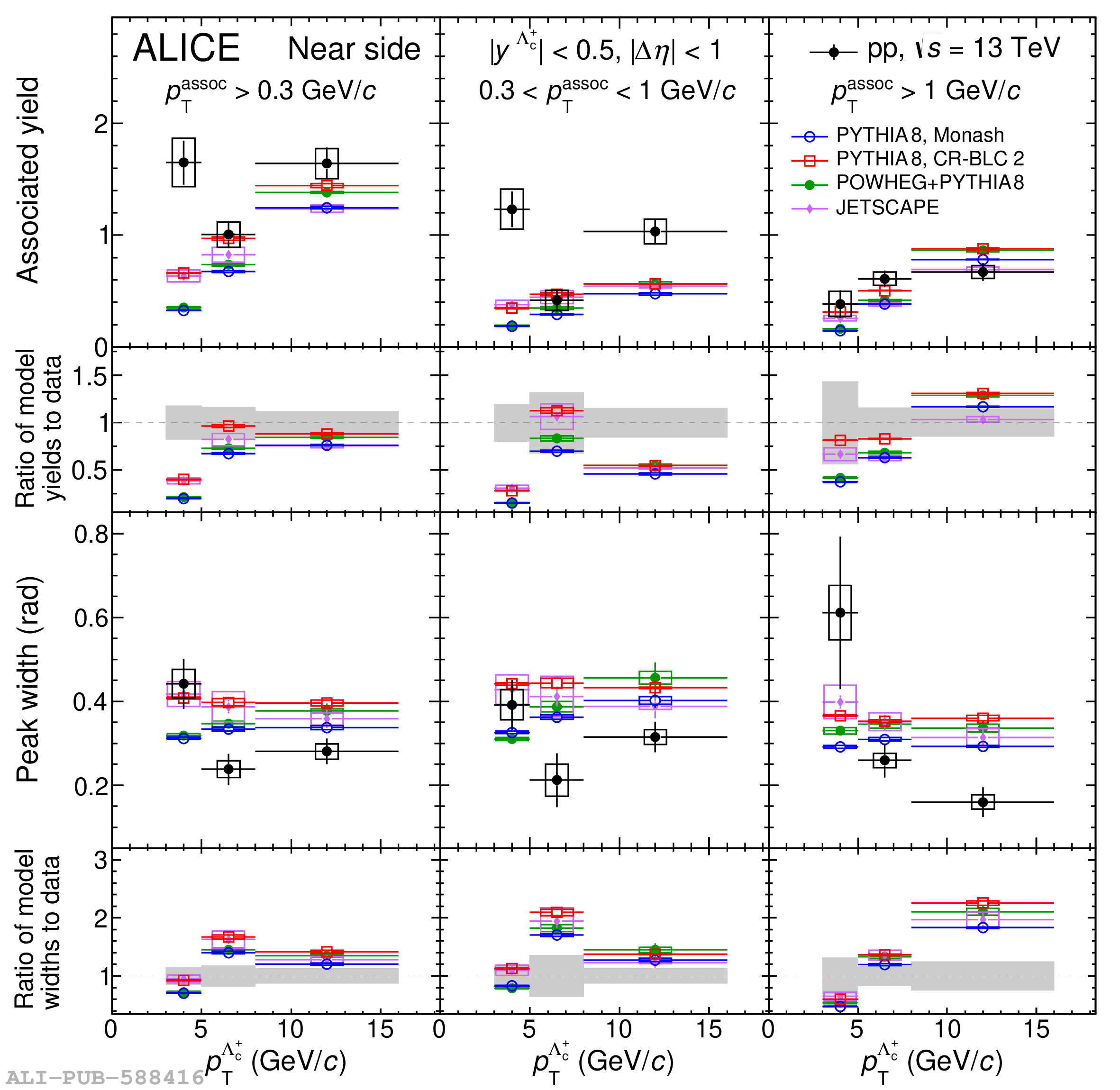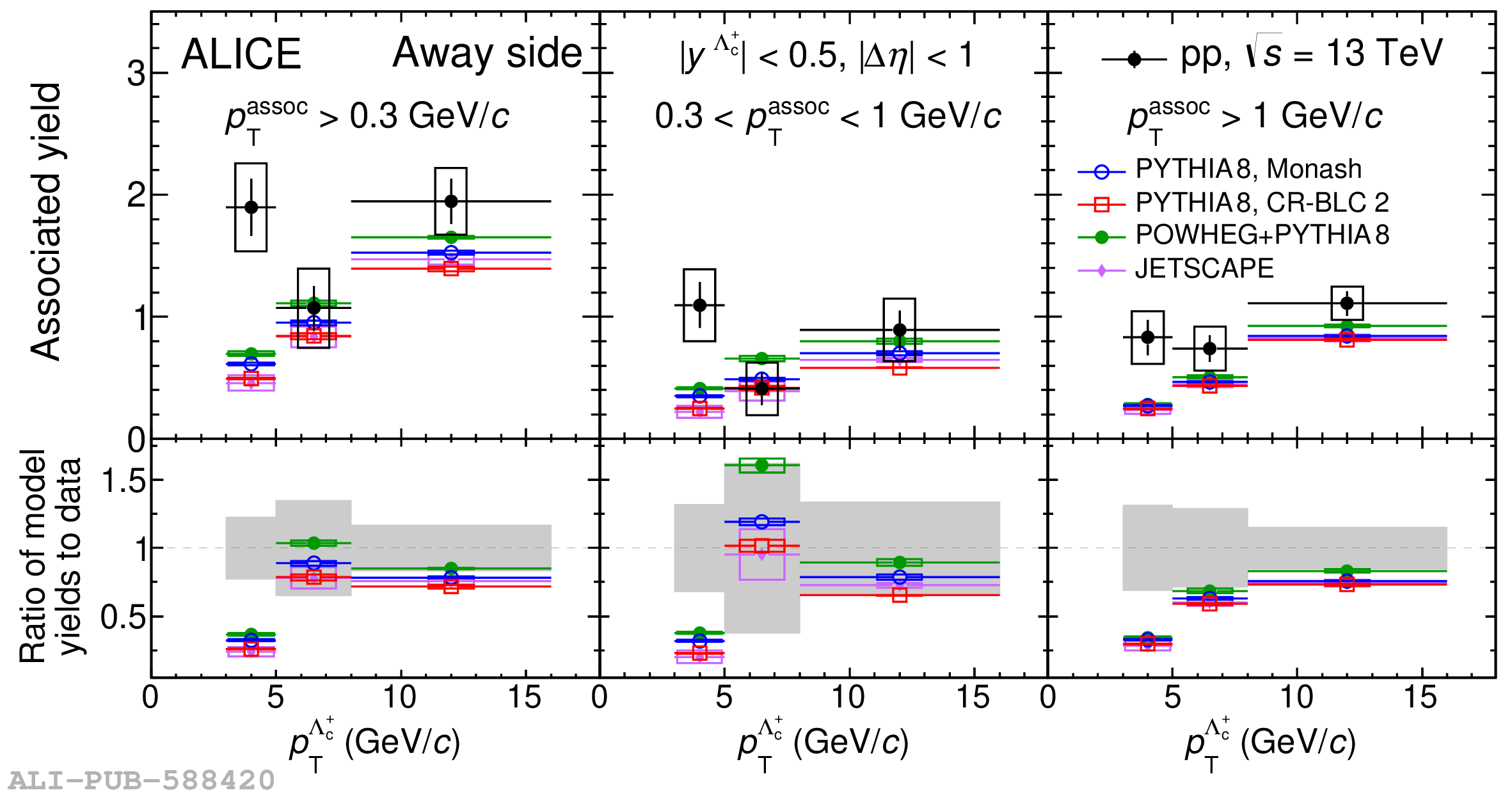The distribution of angular correlations between prompt charm hadrons and primary charged particles in pp collisions is sensitive to the charm-quark hadronisation process. In this letter, charm-baryon correlations are measured for the first time by studying the azimuthal-angle difference between charged particles and prompt $\Lambda_{\rm c}^{+}$ baryons produced in pp collisions at a centre-of-mass energy of $\sqrt{s} = 13$ TeV, with the ALICE detector. $\Lambda_{\rm c}^{+}$ baryons are reconstructed at midrapidity ($|y| <~ 0.5$) in the transverse-momentum interval $3 <~ p_{\rm T} <~ 16$ GeV/$c$, and correlated with charged particles with $p_{\rm T} > 0.3$ GeV/$c$ and pseudorapidity $|\eta| <~ 0.8$. For $3<~ p_{\rm T}^{\Lambda_{\rm c}^{+},{\rm D}} <~5$ GeV/$c$, the comparison with published measurements of D-meson and charged-particle correlations in the same collision system hints at a larger number of low-momentum particles associated with $\Lambda_{\rm c}^{+}$-baryon triggers than with D-meson triggers, both in the collinear and opposite directions with respect to the trigger particle. These differences can be quantified by the comparison of the properties of the near- and away-side correlation peaks, and are not reproduced by predictions of various Monte Carlo event generators, generally underpredicting the associated particle yields at $p_{\rm T}^{\rm assoc}<~1$ GeV/$c$. This tension between $\Lambda_{\rm c}^{+}$-baryon and D-meson associated peak yields could suggest a modified fragmentation of the charm quark, or a different hadronisation process, when a charm baryon is produced in the final state.
Phys. Lett. B 868 (2025) 139681
HEP Data
e-Print: arXiv:2411.10104 | PDF | inSPIRE
CERN-EP-2024-302
Figure group







